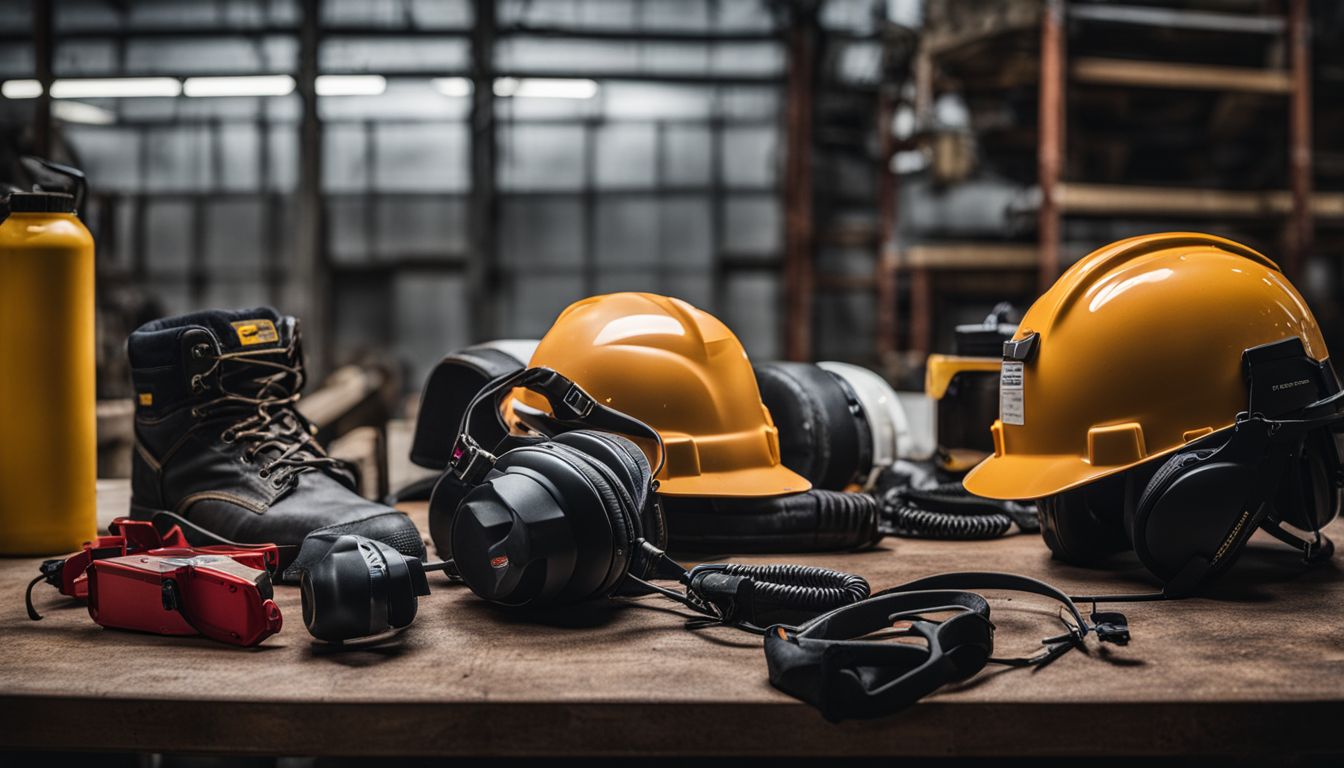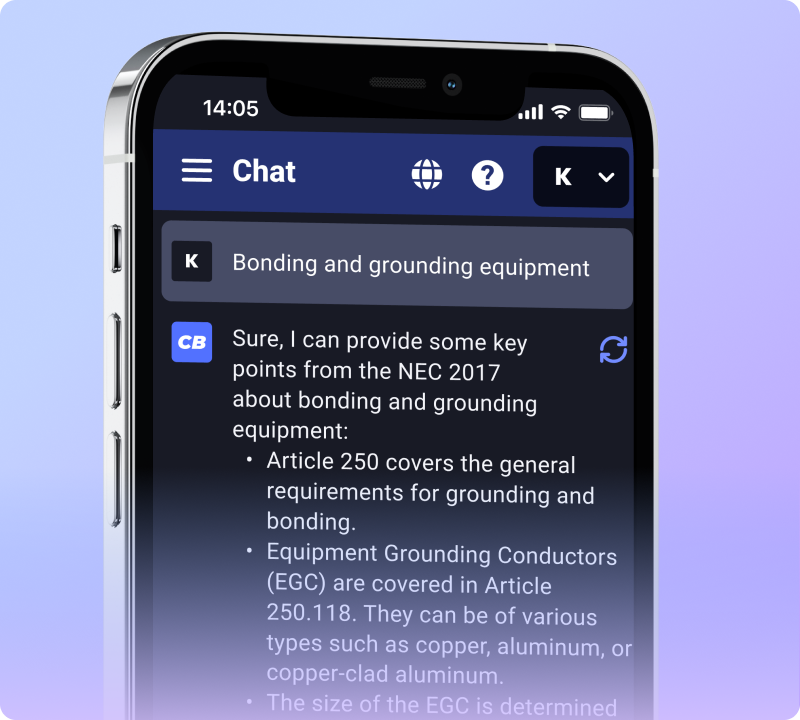Dealing with electricity can be risky. NFPA 70E is a set of rules to keep workers safe from electrical dangers. This article will show you how these safety practices can protect you at work.
Keep reading for life-saving tips.
Key Takeaways
- NFPA 70E sets safety standards to protect workers from electrical dangers like arc flashes and electric shocks. It helps workplaces follow OSHA rules for electrical safety.
- Workers must wear the right personal protective equipment and get training every three years. This keeps them safe from high-voltage sparks and other electrical hazards.
- Doing arc flash risk assessments is important. These help find dangers at work so they can be fixed. Making sure workplaces are safe reduces the chance of accidents.
- There are new rules in NFPA 70E, like wearing arc-rated outerwear and making work areas safer from electrical injuries.
- Everyone working near electricity should learn about NFPA 70E to stay safe at work. This includes people who fix things, emergency helpers, bosses, and workers on construction sites.
Understanding NFPA 70E
NFPA 70E sets safety standards for electrical work. It incorporates OSHA regulations and industry best practices.
Overview of the Standard
The National Fire Protection Association (NFPA) set up safety guidelines in 1896. NFPA 70E focuses on reducing hazards through policies, risk control methods, and program controls.
This standard helps workers stay safe from electrical dangers like arc flashes and electric shock. By following NFPA 70E, workplaces can keep up with OSHA rules for electrical safety.
This standard covers job safety planning and how to use personal protective equipment properly. It makes sure that employers do regular arc flash risk assessments to find any dangers.
Also, it requires workers to get training every three years to stay updated on the latest safety practices. Keeping these standards in mind ensures everyone’s health and safety while managing electrical risks at work.
Key Updates in the Latest Edition
NFPA 70E 2021
arc-rated outerwear
This keeps them safe from electrical hazards like burns from high-voltage sparks. The updates also focus on making work conditions safer from electrical injuries.
Workers learn how to stay away from dangerous areas where arc flashes can happen. They get training on the right PPE and how to lower risks while dealing with high voltages. Every three years, they need to renew their certification to keep up with these standards and ensure workplace safety stays top-notch.
Why NFPA 70E Training is Essential

NFPA 70E training is vital for workplace safety. It helps with OSHA compliance and enhances electrical work environment safety.
Compliance with OSHA Regulations
OSHA rules say workers must learn about safety around electricity. NFPA 70E training meets this need by teaching people how to stay safe when working with electrical gear. This training covers identifying dangers and following the right steps to avoid shocks or burns.
Workers learn to protect themselves and their teammates. Employers have to check places for electrical risks, making sure everything is safe.
Safety in the workplace starts with understanding the hazards we face every day. NFPA 70E training provides that knowledge, aligning with OSHA’s goal of keeping everyone safe at work.
By learning what NFPA 70E says, companies make sure they follow OSHA’s strict rules. They help keep workplaces free from accidents related to electricity. This effort reduces injuries and saves lives by creating a culture of safety among workers.
Enhancing Safety in Electrical Work Environments
Following OSHA regulations closely, enhancing safety in electrical work environments becomes a crucial next step. Safety training can make big differences. It teaches electricians how to avoid dangers like shock hazards and arc flashes that cause serious injuries or even death.
Tools like lockout tagout systems ensure machines are safely shut off during maintenance, preventing unexpected startups.
Creating safer work environments means using personal protective equipment (PPE) correctly and following safety precautions every day. Electricians learn to use ground fault circuit interrupters which protect them from shock.
With proper safety programs in place, workers stay safe and companies follow the law. This keeps everyone focused on doing their best work without fearing for their safety.
Core Components of NFPA 70E Training
Arc Flash Risk Assessment and establishing Electrically Safe Work Conditions are vital components of NFPA 70E Training.
Arc Flash Risk Assessment
Arc flash risk assessment is a critical part of NFPA 70E training. It involves evaluating the electrical system to determine potential hazards and risks, incorporating aspects like equipment labeling, incident energy analysis, and proper PPE selection.
This process helps in identifying areas where arc flash incidents could occur and ensures that necessary safety measures are in place to protect workers from these hazards.
The arc flash risk assessment is crucial for creating a safe working environment as it enables organizations to comply with OSHA regulations, minimize the risk of electrical incidents, and safeguard employees from potential harm.
By conducting this assessment, employers can proactively address potential dangers associated with arc flashes and implement appropriate safety protocols to mitigate these risks effectively.
Arc flash risk assessments are integral for ensuring workplace safety by identifying and addressing potential hazards.
Establishing Electrically Safe Work Conditions
Establishing Electrically Safe Work Conditions is crucial to minimize the risk of electrical incidents. It involves several key components and practices:
- Conduct a thorough assessment of the work area to identify potential electrical hazards, such as exposed wires, faulty equipment, or inadequate grounding.
- Implement proper lockout/tagout procedures to de-energize electrical systems before performing maintenance or repairs, ensuring compliance with OSHA regulations.
- Utilize personal protective equipment (PPE), including insulated gloves, face shields, and flame-resistant clothing, to safeguard against arc flash and shock hazards during work on energized equipment.
- Verify that all electrical equipment is properly maintained and in good working condition through regular inspections and testing procedures.
- Develop and document safety procedures for working on or near live parts, including establishing restricted access boundaries and using insulated tools.
By following these practices, organizations can significantly reduce the risk of electrical accidents and create a safer work environment for employees.
I created a detailed list based on the given instructions while incorporating relevant keywords from the provided list for discussion about “Establishing Electrically Safe Work Conditions.” Let me know if you need further assistance!
Arc Flash and Shock Hazard Assessment
To ensure electrically safe work conditions, conducting an arc flash and shock hazard assessment is crucial. This assessment involves the following key components:
- Identifying Potential Hazards: Recognizing potential scenarios where an arc flash or shock hazard could occur, including electrical overcurrent, equipment failure, and human error.
- Analyzing Risk Levels: Evaluating the severity of potential arc flash and shock hazards based on equipment voltage, task proximity, and likelihood of occurrence.
- Implementing Control Measures: Employing engineering controls such as insulation barriers, administrative controls like lockout/tagout procedures, and personal protective equipment to mitigate identified risks.
- Periodic Review and Update: Regularly reassessing workplace conditions and safety practices to adapt to changes in equipment, technology, or tasks.
- Training and Awareness: Ensuring all personnel are trained in recognizing arc flash and shock hazards, understanding warning signs, and responding appropriately in emergency situations.
Training Requirements and Procedures
NFPA 70E Training is essential for those working in electrical environments. It’s important to know who needs training and the required documentation.
Who Needs Training
Employees who work within 4 feet of exposed energized parts at or above 50 volts require NFPA 70E training. Training is necessary for personnel involved in electrical safety programs, emergency response, and those subject to OSHA regulations.
- Qualified Electrical Workers:
- Those working near energized equipment
- Electricians, maintenance workers, and engineers
- Unqualified Persons:
- Employees with minimal electrical exposure but may encounter hazards
- Office workers, supervisors, and managers who may interact with electrical systems
- Safety Managers and Supervisors:
- Responsible for overseeing electrical safety programs
- Ensuring compliance with NFPA standards and OSHA regulations
- Emergency Responders:
- Personnel trained to address electrical emergencies
- Firefighters, EMTs, and hazmat teams
- Construction Workers:
- Engaged in construction or renovation projects involving electrical systems
- Carpenters, plumbers, roofers, and HVAC technicians
Training Documentation Requirements
Before starting their jobs, employees must go through arc flash training and hazard evaluations. After completing the training, documentation should include employee names, dates of training, and skill demonstration proficiency.
Employers need to maintain thorough records and provide job briefings for repetitive tasks in compliance with OSHA and NFPA 70E standards.
Course Objectives and Learning Outcomes
NFPA 70E training aims to equip participants with the following knowledge and skills:
- Understanding electrical safety standards to ensure compliance with OSHA regulations and industry best practices, including Lockout/Tagout Procedure Training.
- Developing a thorough understanding of ARC ratings, creating safe working conditions, and identifying electrical shock hazards to enhance employee safety in the workplace.
- Executing lockout/tagout procedures effectively and understanding emergency response training requirements for electrical incidents.
- Implementing precautionary techniques, electrical policies, and proper use of personal protective equipment (PPE) to mitigate workplace hazards related to arc flash and electrical injuries.
- Applying approach distances, shock and arc flash boundaries, and job safety planning to establish electrically safe work conditions in accordance with industry standards.
Advanced Topics in Arc Flash Safety
Learn about Infrared Thermography Techniques and how to Implement Safety Best Practices. Read more for advanced insights.
Infrared Thermography Techniques
Infrared thermography techniques
thermal imaging
potential electrical hazards
preventive safety approach
Competence in utilizing infrared thermography is developed through practical on-the-job processes, enhancing the ability to proactively manage electrical risks.
Moving forward to “Implementing Safety Best Practices,” let’s delve into how organizations can effectively apply these advanced techniques for comprehensive workplace safety.
Implementing Safety Best Practices
Implementing safety best practices is crucial for minimizing workplace hazards and ensuring compliance with OSHA and NFPA 70E standards. Here’s a detailed outline to help you understand how to implement these best practices effectively:
- Hazard Awareness Training:
- Train employees on recognizing electrical hazards and the proper protocols for addressing them.
- Utilize learning management systems (LMS) for convenient and effective training delivery.
- Administrative and Engineering Controls:
- Implement administrative controls such as job briefings for repetitive tasks to ensure consistent hazard awareness.
- Employ engineering controls like overcurrent protection to mitigate electrical risks in the workplace.
- Regular Audits:
- Conduct regular audits of electrical equipment to ensure it is free from hazards and complies with safety regulations.
- Use infrared thermography techniques to identify potential issues in electrical systems proactively.
By incorporating these safety best practices, organizations can create a safer work environment while adhering to regulatory requirements and reducing the risk of electrical injuries.
Qualified Electrical Worker Training
Qualified Electrical Worker Training is essential for individuals working with or near energized electrical equipment. It ensures that workers understand electrical hazards and know how to mitigate risks.
- Understanding Electrical Hazards:
- Recognizing different types of electrical hazards, such as shock, arc flash, and blast.
- Identifying potential risks associated with working on or near energized equipment.
- Safety Procedures:
- Learning proper lockout/tagout procedures to ensure equipment is de-energized before work begins.
- Understanding the use of personal protective equipment (PPE) and its role in preventing electrical injuries.
- Risk Assessment and Mitigation:
- Conducting thorough risk assessments to identify potential hazards in the workplace.
- Implementing strategies to minimize the risk of arc flashes and shock incidents.
- Compliance and Regulations:
- Understanding OSHA regulations related to electrical safety in the workplace.
- Ensuring compliance with NFPA 70E standards for working safely with electricity.
- Emergency Response:
- Knowing how to respond to electrical incidents, including administering first aid and seeking medical assistance.
- Developing emergency response plans specific to electrical hazards within the workplace.
Completing Qualified Electrical Worker Training not only enhances individual safety but also contributes to a safer work environment for all employees.
Upcoming Training Opportunities
1. Learn about scheduled training sessions.
2. Explore options for instructor-led and online training.
Scheduled Training Sessions
- The scheduled training sessions are available for registration on OSHA.com.
- These sessions are instructor-led and offer in-depth learning opportunities.
- Participants can choose from a range of dates and times to suit their schedules.
- The courses are accessible through web browsers, tablets, and smartphones for convenience.
- Upon completion, participants receive 0.2 CEUs.
Plan Your Training Today!
Instructor-Led and Online Options
In addition to scheduled training sessions, participants can choose between instructor-led and online options. Both formats offer interactive content and flexible learning schedules, allowing individuals to complete the course at their own pace.
- Instructor-Led Training:
- This option provides a customized learning experience for groups.
- Rates are based on the number of participants and any specific course adjustments needed.
- The training is tailored to meet the unique needs of the organization or team undergoing the instruction.
- Online Learning:
- Available through OSHA.com, this option offers the flexibility of completing the course remotely.
- Participants have 24/7 support and access to interactive content designed for multi-device compatibility.
- Course benefits include animated videos and adjustable font size on slides, enhancing the overall learning experience.
Conclusion
In conclusion, understanding NFPA 70E safety work practices is crucial for safeguarding against electrical hazards. Professionals working in or near electrical environments must comply with the standards and complete the necessary training to ensure workplace safety.
Embracing arc flash training not only enhances safety but also underpins OSHA regulations, providing a tailored approach towards mitigating electrical risks. It’s essential for employers and employees to navigate the complexities of electrical safety by implementing robust risk controls and following best practices outlined in NFPA 70E.

